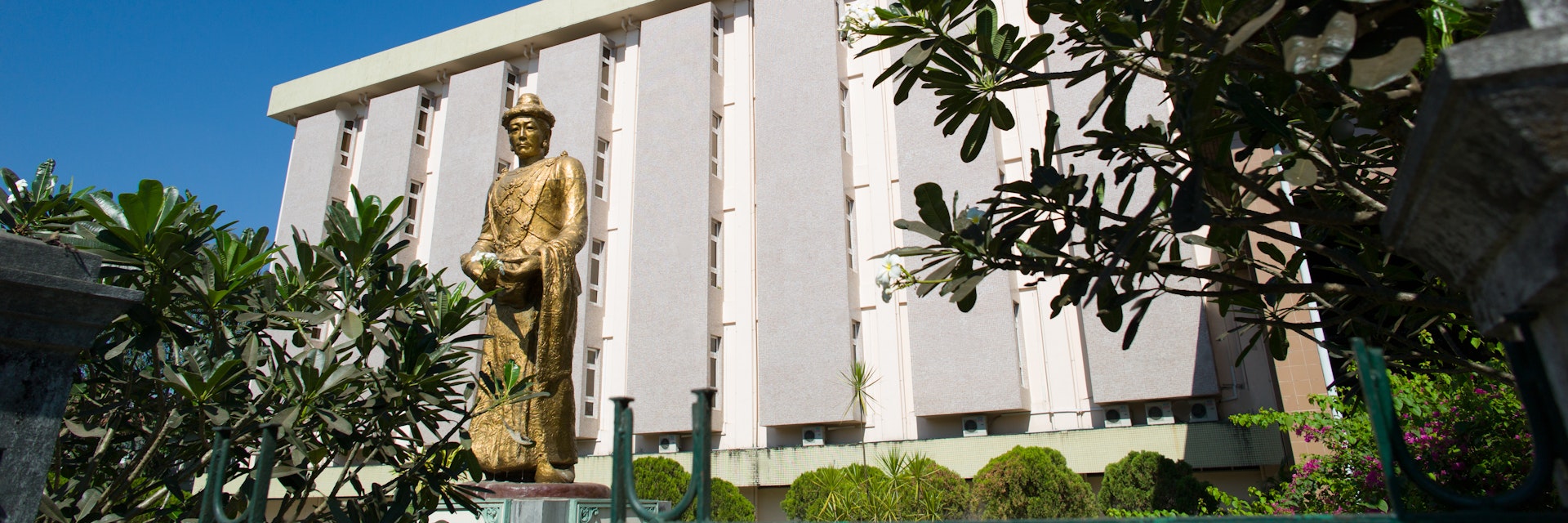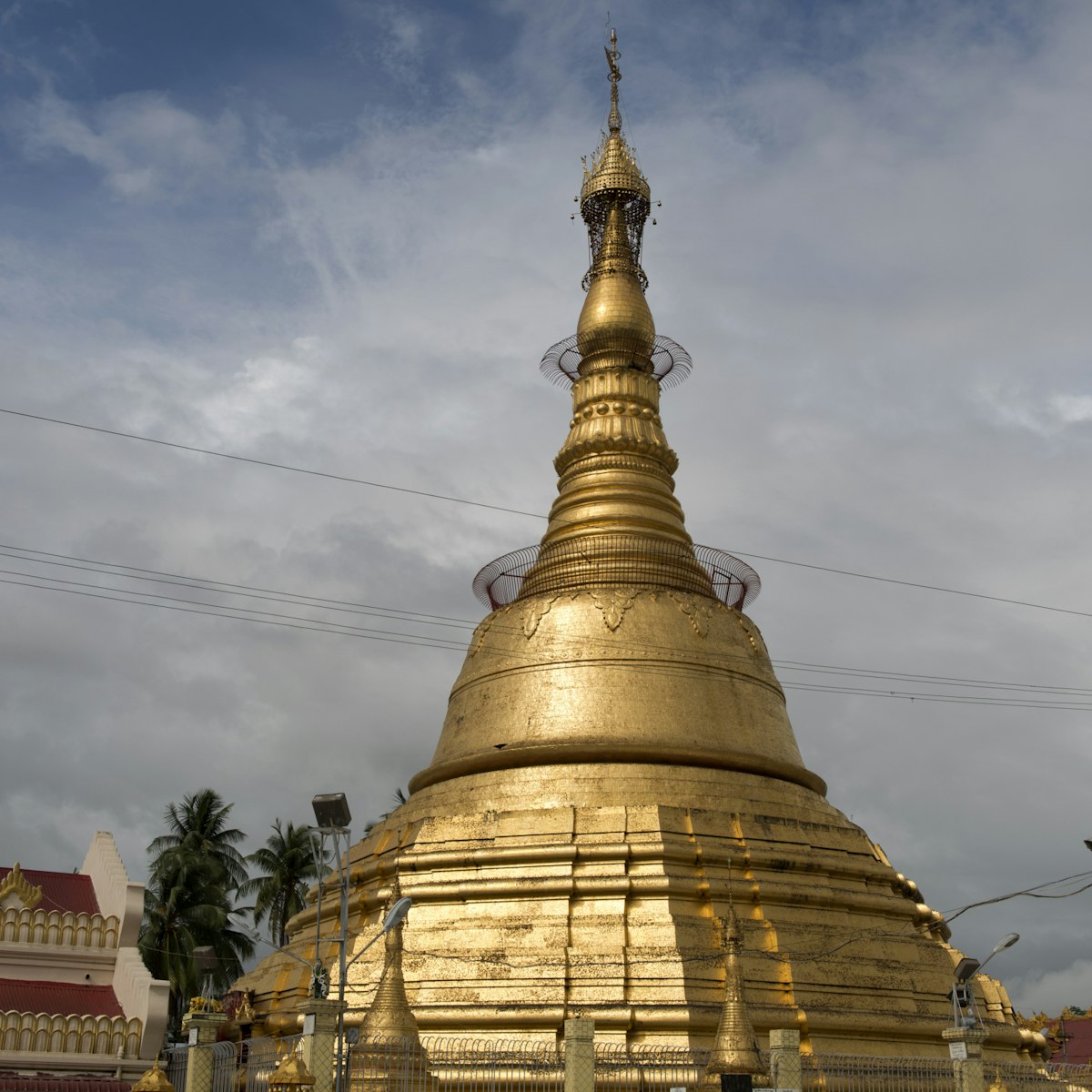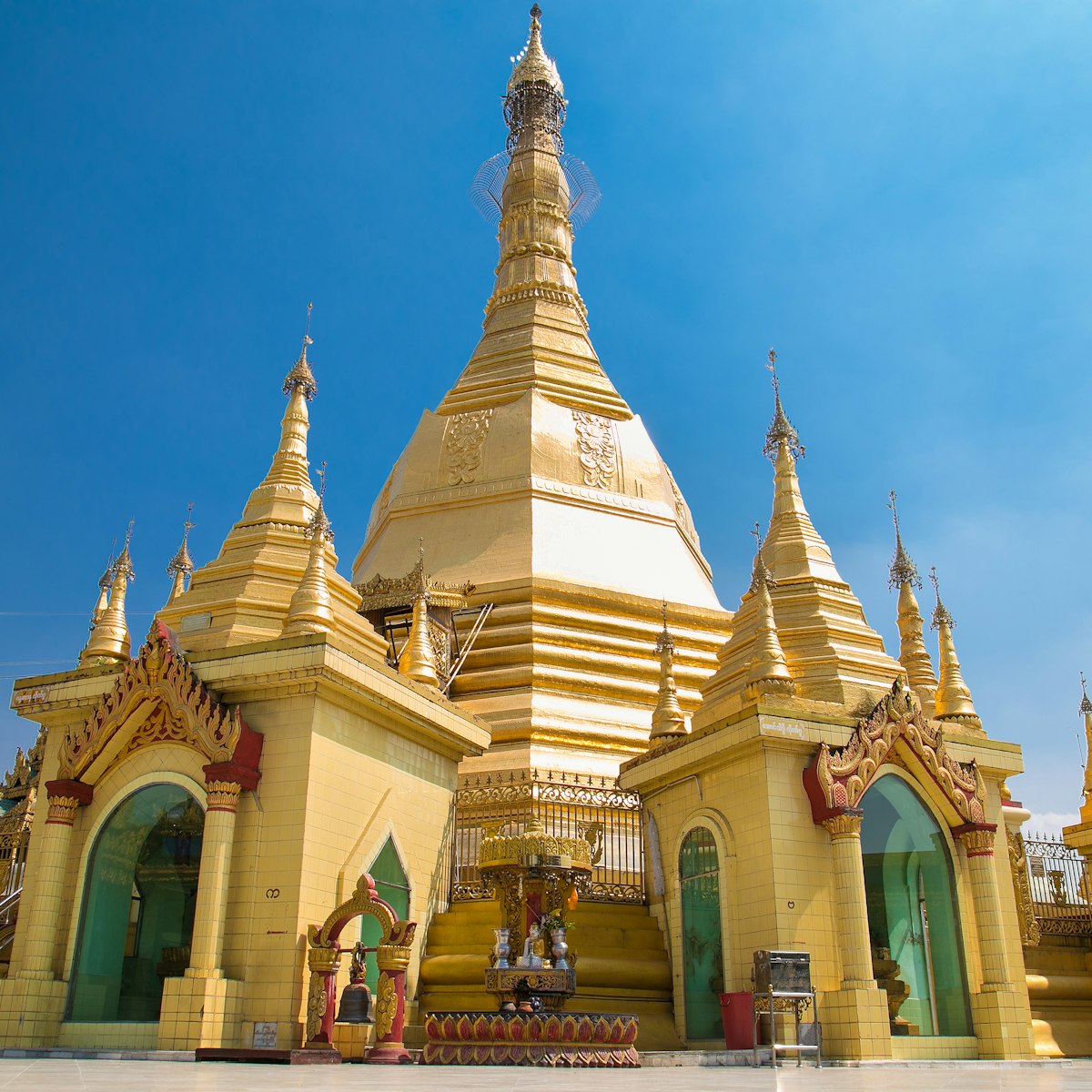Even though the museum's collection is poorly labelled and often badly lit, the treasures that lie within this cavernous building deserve a viewing. The highlight is the spectacular 26ft-high, jewel-encrusted Sihasana (Lion Throne), which belonged to King Thibaw Min, the last king of Myanmar. It’s actually more of an entrance doorway than a throne, but let’s not quibble – it’s vastly more impressive than your front door.
Further signs that the kings of old had no desire for subtlety are the ornate beds, silver and gold rugs, flashy palanquins (one of which is palatial in size and splendour), kitchen chairs made of ivory, some breathtaking ceremonial dresses and a large collection of betel-nut holders and spittoons.
The upper-floor galleries take you on an amble through natural history, prehistory, art and the cultures of Myanmar's ‘national races’. The Buddha Images gallery on the 4th floor is well worth searching out, as is the art gallery on the 3rd floor.
On the ground floor there's a model of the colonial-era State House that was demolished in 1978; the chandeliers that hang on each floor of the museum are all that remains of it.







